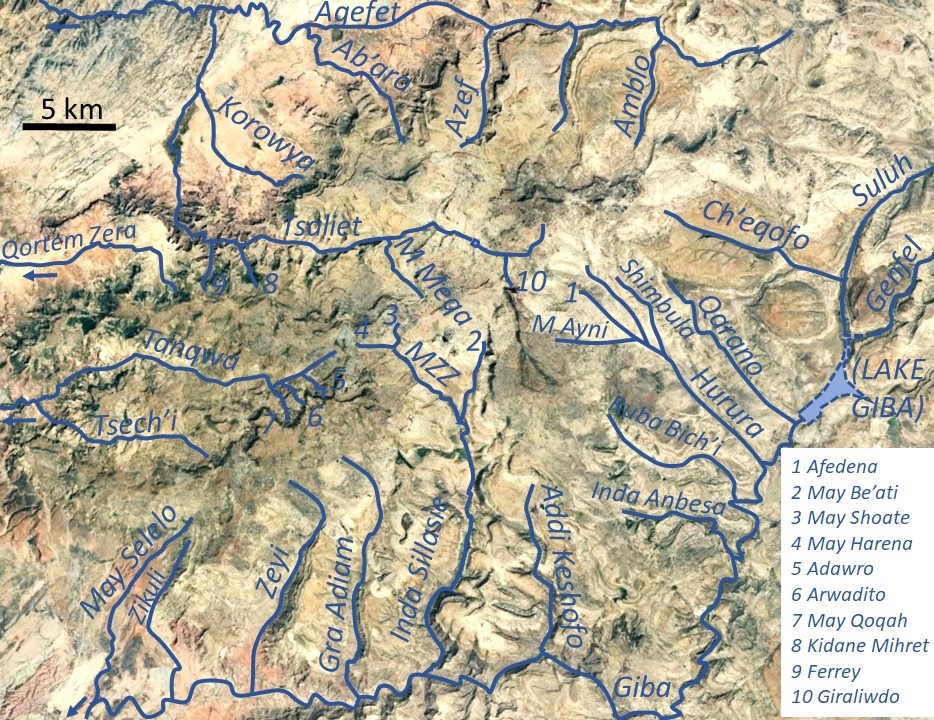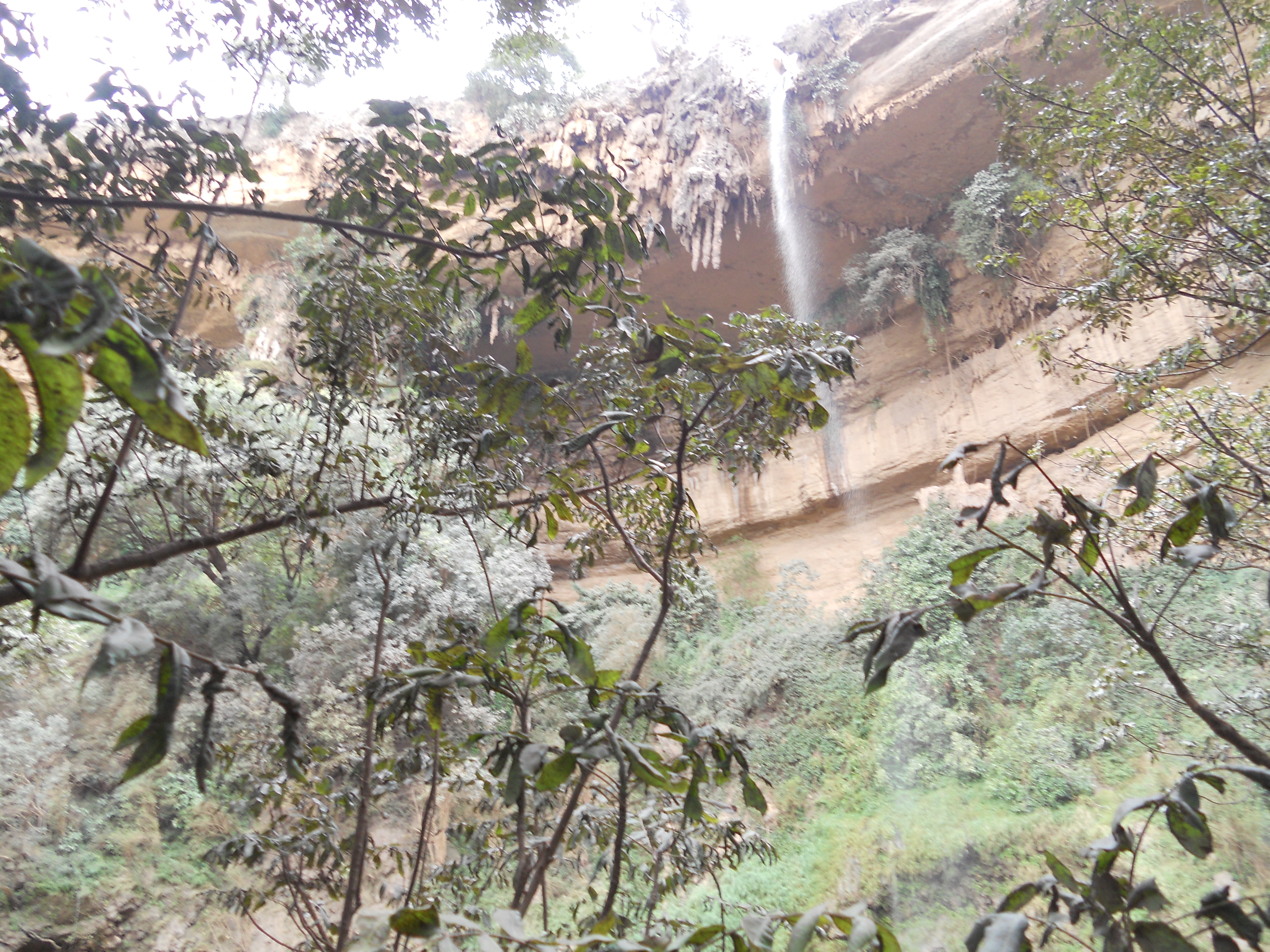Tsaliet River Near Addeha on:
[Wikipedia]
[Google]
[Amazon]
The Tsaliet is a river in northern 
 It is mostly a confined river, locally
It is mostly a confined river, locally
 From upstream to downstream, the following lithological units occur in the catchment.
*
From upstream to downstream, the following lithological units occur in the catchment.
*  *
*
 During its course, this river passes through two woredas and constitutes their boundary over some six kilometres. On the various parts:
*
During its course, this river passes through two woredas and constitutes their boundary over some six kilometres. On the various parts:
*
Ethiopia
Ethiopia, officially the Federal Democratic Republic of Ethiopia, is a landlocked country located in the Horn of Africa region of East Africa. It shares borders with Eritrea to the north, Djibouti to the northeast, Somalia to the east, Ken ...
, belonging to the Nile
The Nile (also known as the Nile River or River Nile) is a major north-flowing river in northeastern Africa. It flows into the Mediterranean Sea. The Nile is the longest river in Africa. It has historically been considered the List of river sy ...
basin. Rising in the mountains of Dogu’a Tembien
Dogu'a Tembien (, "Upper Tembien", sometimes transliterated as Degua Tembien or Dägʿa Tämben) is a districts of Ethiopia, woreda in Tigray Region, Ethiopia. It is named in part after the former province of Tembien Province, Tembien. Nowadays, ...
, where it is first called May Leiba River and then Tinsehe River, it flows westward through a deep gorge, to become Tsaliet in its lower course, where it empties in Weri’i River, just upstream of the main Weri’i bridge along the road to Adwa
Adwa (; ; also spelled Adowa or Aduwa) is a town and separate woreda in Tigray Region, Ethiopia. It is best known as the community closest to the site of the 1896 Battle of Adwa, in which Ethiopian soldiers defeated Italian troops, thus being ...
.

Characteristics
 It is mostly a confined river, locally
It is mostly a confined river, locally meander
A meander is one of a series of regular sinuous curves in the Channel (geography), channel of a river or other watercourse. It is produced as a watercourse erosion, erodes the sediments of an outer, concave bank (cut bank, cut bank or river cl ...
ing in its narrow alluvial plain, with an average slope gradient of 25 metres per kilometre. With its tributaries, the river has cut deep gorges. Along the middle of its course, it occupies sandy pediments in Addeha.
Flash floods and flood buffering
Runoff mostly happens in the form of high runoff discharge events that occur in a very short period (calledflash floods
A flash flood is a rapid flooding of low-lying areas: washes, rivers, dry lakes and depressions. It may be caused by heavy rain associated with a severe thunderstorm, hurricane, or tropical storm, or by meltwater from ice and snow. Flash fl ...
). These are related to the steep topography, often little vegetation cover and intense convective rainfall. The peaks of such flash floods have often a 50 to 100 times larger discharge than the preceding baseflow
Baseflow (also called drought flow, groundwater recession flow, low flow, low-water flow, low-water discharge and sustained or fair-weather runoff) is the portion of the streamflow that is sustained between precipitation events, fed to streams by d ...
.
The magnitude of floods in this river has however been decreased due to interventions in its upper catchment, particularly around the May Leiba reservoir. Physical conservation structures such as stone bunds and check dam
A steel check dam
A check dam is a small, sometimes temporary, dam constructed across a swale, drainage ditch, or waterway to counteract erosion by reducing water flow velocity. Check dams themselves are not a type of new technology; rather, t ...
s intercept runoff. On many steep slopes, exclosure
An exclosure, in an area being used extensively for grazing, is a limited area from which unwanted browsing (herbivory), browsing animals, such as domestic cattle or wildlife such as deer, are excluded by fencing or other means.
Environmental ...
s have been established; the dense vegetation largely contributes to enhanced infiltration, less flooding and better baseflow
Baseflow (also called drought flow, groundwater recession flow, low flow, low-water flow, low-water discharge and sustained or fair-weather runoff) is the portion of the streamflow that is sustained between precipitation events, fed to streams by d ...
. Examples are the Khunale exclosure and the Harehuwa exclosure.
Irrigated agriculture
Besides springs and reservoirs, irrigation is strongly dependent on the river's baseflow. Such irrigated agriculture is important in meeting the demands for food security and poverty reduction. Irrigated lands are established in the narrow alluvial plains along the river in: * large lowland irrigation schemes with tropical fruits in Addeha * spring-based irrigation inRuba Weyni
Ruba may refer to:
People
* Máel Ruba (642–722), Irish saint
* Ruba Ghazal (born 1977), Canadian politician
* Ruba Katrib, American curator
* Ruba Nadda (born 1972), Canadian film director
Places
* Ruba, Belarus
* Ruba Parish, Latvia
Food
* U ...
Transhumance towards the gorge
The valley bottoms in the gorges of this river have been identified as transhumance destination zones.Transhumance
Transhumance is a type of pastoralism or Nomad, nomadism, a seasonal movement of livestock between fixed summer and winter pastures. In montane regions (''vertical transhumance''), it implies movement between higher pastures in summer and low ...
takes place in the summer rainy season, when the lands near the villages are occupied by crops. Young shepherds will take the village cattle down to the gorge and overnight in small caves. The gorges are particularly attractive as a transhumance destination zone, because there is water and good growth of semi-natural vegetation.
Geology
Tsaliet Group
The Tsaliet Group, an older sequence of metamorphic rock is named after the Tsaliet River. Based on crystallisation ages of its rocks in Eritrea and Ethiopia, it is estimated that the igneous activity occurred between ~850 and 740 million years ago. The Tsaliet Group has recorded the arc volcanism and the formation of crust that later formed part of the Arabian-Nubian Shield. The Group consists of partially metamorphosed volcanic and sedimentary rocks (impure marble, slate, calcareous siltstone, sericite-chlorite schist, greywacke, and tuff), with a minimum thickness between 1500 and 2500 metres.Boulders and pebbles in the river bed
 From upstream to downstream, the following lithological units occur in the catchment.
*
From upstream to downstream, the following lithological units occur in the catchment.
* Phonolite
Phonolite is an uncommon shallow intrusive or extrusive rock, of intermediate chemical composition between felsic and mafic, with texture ranging from aphanitic (fine-grained) to porphyritic (mixed fine- and coarse-grained). Phonolite is a var ...
plugs
* Upper basalt
* Interbedded lacustrine deposits
* Lower basalt
* Amba Aradam Formation
The Amba Aradam Formation is a Cretaceous sandstone formation in Ethiopia. It is up to 200 metres thick, for instance in the Degua Tembien district. As fossils are absent, the age of the Amba Aradam Formation was interpreted based on the age of as ...
 *
* Antalo Limestone
The Antalo Limestone, also known as the Antalo Sequence, is a geological formation in Ethiopia. It is between 300 and 800 metres thick and comprises fossiliferous limestones and marls that were deposited in a reef. Marine microfossils have shown ...
* Quaternary
The Quaternary ( ) is the current and most recent of the three periods of the Cenozoic Era in the geologic time scale of the International Commission on Stratigraphy (ICS), as well as the current and most recent of the twelve periods of the ...
freshwater tufa
Tufa is a variety of limestone formed when carbonate minerals precipitation (chemistry), precipitate out of water in ambient temperature, unheated rivers or lakes. hot spring, Geothermally heated hot springs sometimes produce similar (but less ...
* Adigrat Sandstone
The Adigrat Sandstone formation in north Ethiopia, in a wide array of reddish colours, comprises sandstones with coarse to fine grains, and locally conglomerates, silt- and claystones. Given the many lateritic palaeosols and locally fossil woo ...
* Edaga Arbi Glacials
The Edaga Arbi Glacials are a Palaeozoic geological formation in Tigray (northern Ethiopia) and in Eritrea. The matrix is composed of grey, black and purple clays (locally silt), that contains rock fragments up to 6 metres across. Pollen dating yi ...
* Tsaliet metamorphic rock
Logically, in the uppermost stretches of the river, only the pebbles and boulders of the upper lithological units will be present in the river bed, whereas more downstream one may find a more comprehensive mix of all lithologies crossed by the river.
Natural boundary
 During its course, this river passes through two woredas and constitutes their boundary over some six kilometres. On the various parts:
*
During its course, this river passes through two woredas and constitutes their boundary over some six kilometres. On the various parts:
* Dogu’a Tembien
Dogu'a Tembien (, "Upper Tembien", sometimes transliterated as Degua Tembien or Dägʿa Tämben) is a districts of Ethiopia, woreda in Tigray Region, Ethiopia. It is named in part after the former province of Tembien Province, Tembien. Nowadays, ...
to the southeast
* Kola Tembien
Kola Tembien (, "Lower Tembien") is a woreda in Tigray Region, Ethiopia. It is named in part after the former province of Tembien. Part of the Mehakelegnaw Zone, Kola Tembien is bordered on the south by Abergele, on the west by the Tekezé River ...
to the northwest
Trekking along the river
Trekking routes have been established across and along this river. The tracks are not marked on the ground but can be followed using downloaded .GPX files. * Trek 3 follows the river course * Trek 21 runs at half height on the flanks of the Tsaliet gorge inHaddinnet
Haddinnet, also transliterated as Hadnet, is a ''tabia'' or municipality in the Degua Tembien, Dogu'a Tembien district of the Tigray Region of Ethiopia. The ''tabia'' centre is in Addi Idaga village, located approximately 6.5 km to the north ...
* Treks 23 and 26 round the upper catchment
In the rainy season, flash floods may occur and it is advised not to follow the river bed. At times it may be impossible to cross the river in the rainy season.
See also
*List of Ethiopian rivers
This is a list of streams and rivers in Ethiopia, arranged geographically by drainage basin. There is an alphabetic list at the end of this article.
Flowing into the Mediterranean
*''Nile (Egypt, Sudan)''
Atbarah River
* Mareb River (or ...
References
{{reflist Rivers of Ethiopia Dogu'a Tembien Tigray Region Nile basin